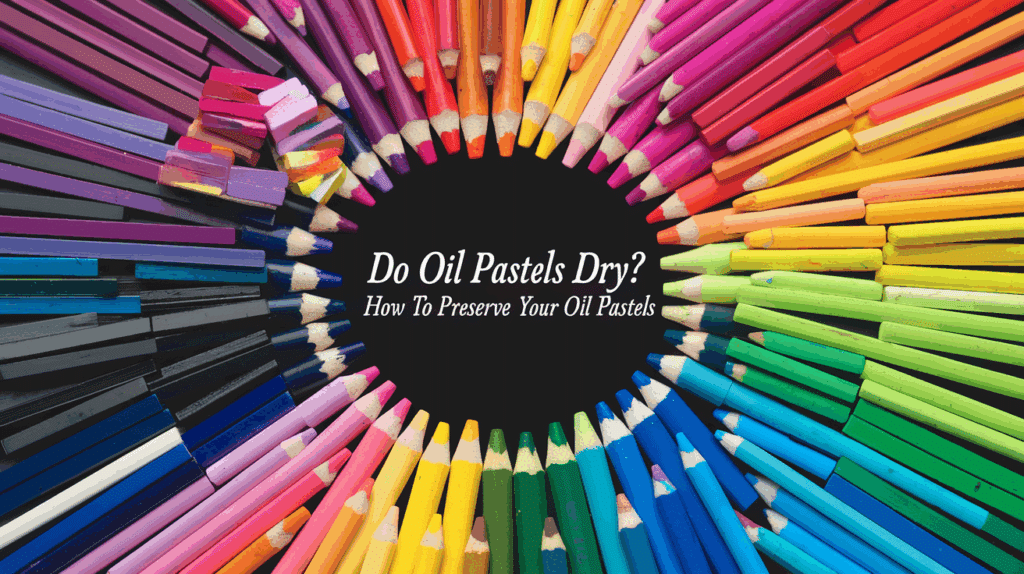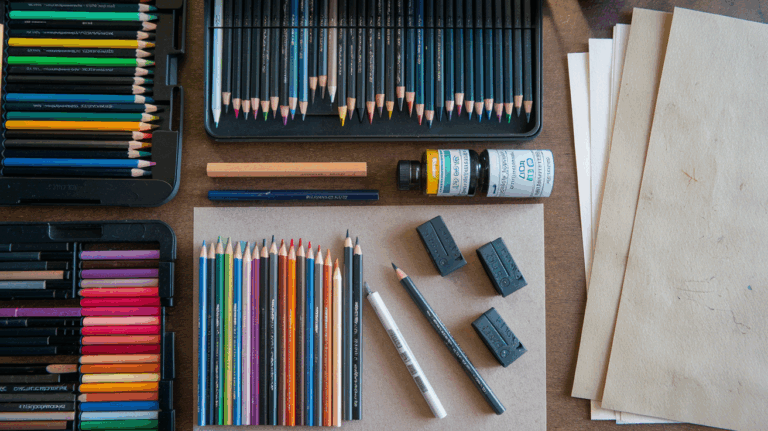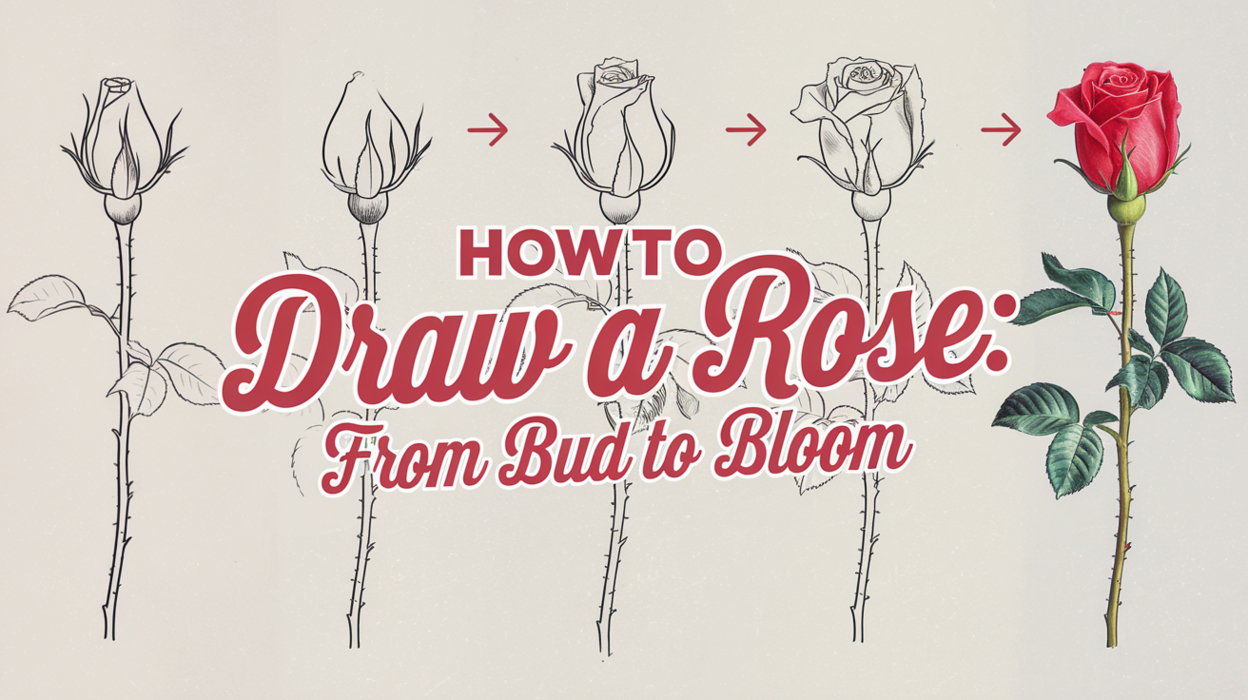Oil pastels offer beautiful colors and blending capabilities, but many artists worry about drying and preservation issues. Unlike dry pastels, oil pastels behave differently and require special handling to maintain their quality.
Artists often wonder, “Do oil pastels dry?” The answer isn’t straightforward. Oil pastels contain non-drying oils that keep them soft for a long time, which is both helpful and challenging for creators.
This blog will show exactly how oil pastels set over time and what artists can do to protect their creations. Readers will learn about proper storage methods, fixative options, and framing techniques that work best for oil pastels.
The blog also covers common problems artists face with oil pastels and provides simple solutions to extend the life of artwork.
Understanding Oil Pastels: Composition and Properties
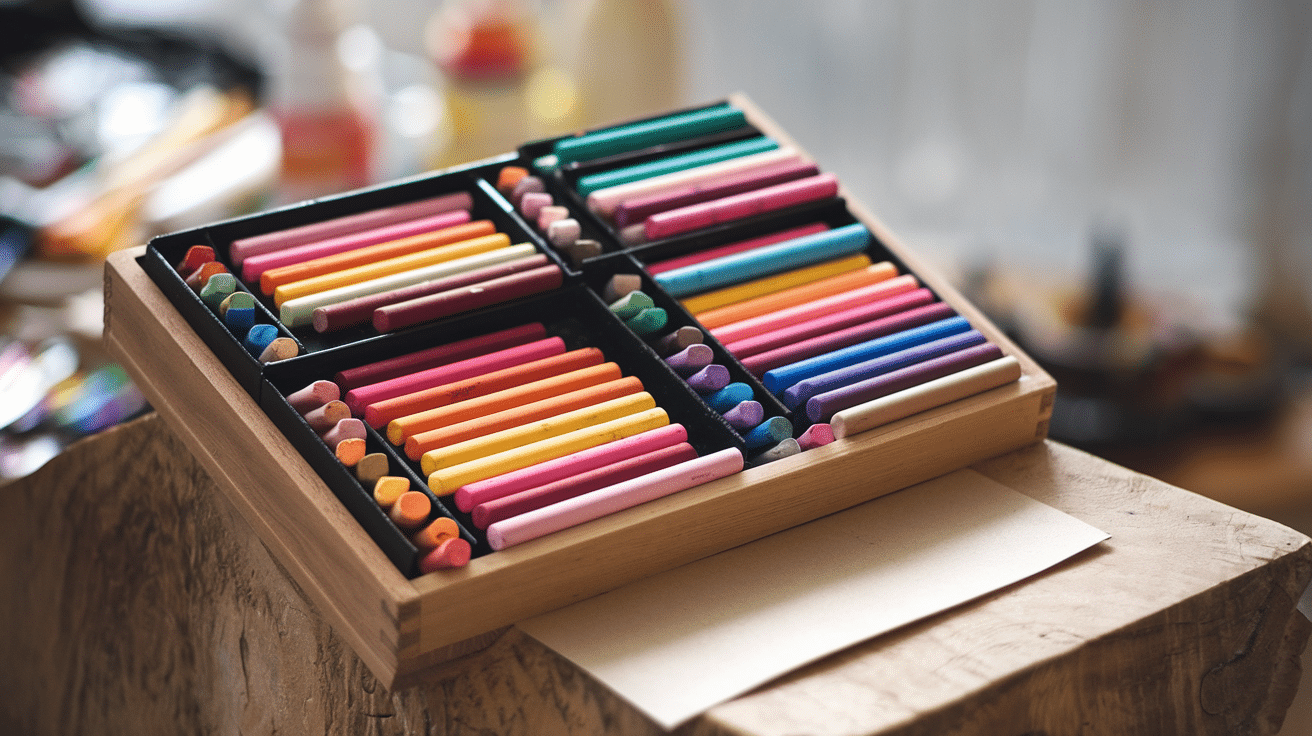
Oil pastels have a unique makeup that sets them apart from other art supplies. Artists who understand these properties can make better choices about how to use and preserve their work.
Getting to know what’s in oil pastels helps explain why they behave the way they do. Let’s look at what makes these colorful sticks special.
What Makes Oil Pastels Different from Dry Pastels?
Oil pastels contain wax and non-drying oils mixed with pigment, creating a creamy texture that feels smooth on paper and allows for easy blending without additional tools.
Unlike dry pastels, they produce almost no dust when used, making them cleaner to work with and more suitable for artists with respiratory sensitivities or those in small spaces.
Oil pastels stick to surfaces differently than dry pastels. They form a thin film that sits on top of the paper rather than embedding into the fibers, which creates a different visual effect and handling experience.
The oil binder in oil pastels creates more saturated colors that appear richer and more vivid.
Artists often notice that oil pastels’ colors stay bright even after application and don’t lighten as much as dry pastels. These differences make oil pastels a unique medium with its own set of techniques and applications in the art world.
The Science Behind Oil Pastel Formulation
- Binder ratio: Manufacturers adjust the ratio of wax to oil to create different hardness levels. Student-grade pastels typically contain more wax and less pigment, while artist-grade options have more oil and higher pigment concentrations.
- Temperature response: Oil pastels become softer as they warm up from handling or room temperature. This physical property makes them respond well to pressure and allows for techniques like finger blending that aren’t possible with dry media.
- Chemical stability: The non-drying oils in oil pastels resist oxidation much better than the linseed oil used in oil paints. This gives them a more stable shelf life and prevents them from hardening in the stick form.
Why Oil Pastels Stay Workable for Long Periods?
- Non-drying oils: The key oils used don’t evaporate or harden with air exposure like linseed oil would.
- Minimal oxidation: Oil pastels undergo very slow oxidation, meaning they change very little over time.
- Stable formula: The balance of wax and oil creates a stable product that resists environmental changes.
- No water content: Unlike water-based media, there’s nothing to evaporate that would cause hardening.
- Low reactivity: The ingredients in oil pastels have limited chemical reactions with air or light.
Do Oil Pastels Dry for Real?

Many artists ask “Do Oil Pastels Dry?” when they first start working with this medium. The answer requires looking at how these colorful sticks behave over time. Oil pastels don’t dry in the traditional sense – they undergo a slow curing process that’s quite different from other art materials.
Partial hardening: Oil pastels never completely dry like paints. They form a skin on the surface while remaining soft underneath. This process can take months or even years, depending on how thickly they’re applied to the surface.
Oil migration: Over time, some of the oils in the pastels migrate into the paper or support. This causes the surface to become less sticky but still sensitive to touch and pressure changes.
Temperature effects: Warmer environments significantly slow the setting process of oil pastels. Many artists have noticed that works kept in air-conditioned rooms tend to firm up faster than those in warm studios or galleries.
Humidity impact: Higher humidity levels prevent oil pastels from setting properly. In very dry climates, the surface of oil pastel artworks may become slightly firmer more quickly than in humid regions.
Thickness matters: Thinly applied layers of oil pastels will set more quickly than thick applications. Artists who work with many thin layers might notice their earlier layers becoming less workable after several days or weeks.
Paper absorption: More absorbent papers pull oils from the pastels faster, creating a quicker setting effect. Non-absorbent surfaces like glass or metal will keep oil pastels workable almost indefinitely.
Setting indicators: When oil pastels begin to set, they become less glossy and slightly less vibrant. The surface develops a subtle matte quality while remaining vulnerable to pressure and touch.
Fixative reaction: Applying fixatives can create a protective film that mimics drying. While the pastels underneath remain soft, this surface film prevents smudging and gives the appearance of having dried.
Fixatives for Oil Pastels: What Works the Best
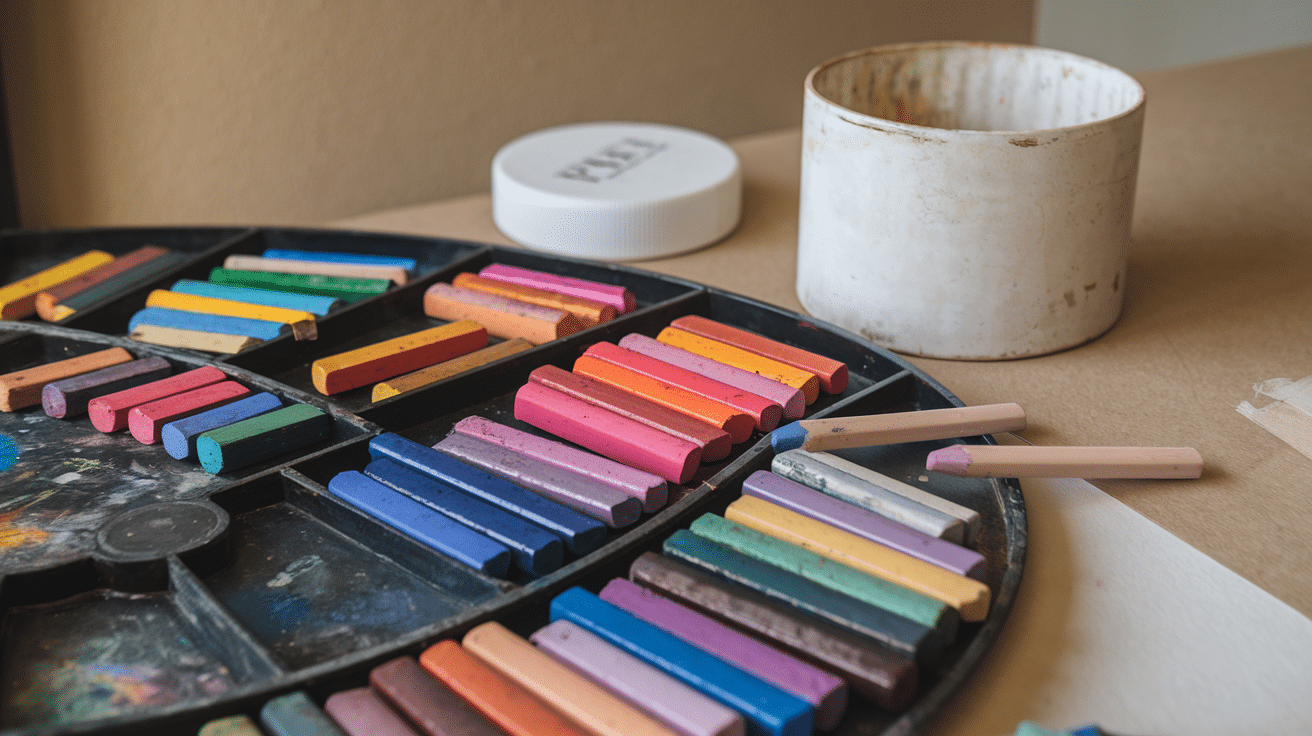
Finding the right fixative for oil pastels can be tricky. Unlike regular pastels, oil pastels stay soft for a long time due to their oil content.
Artists often try various products to help set their work without changing the colors or texture. The table below shows common fixatives and their effectiveness with oil pastels based on testing by professionals.
| Fixative Type | Effectiveness | Drying Time | Color Impact | Best Used For |
|---|---|---|---|---|
| Workable Spray Fixative | Low to Medium | 15-30 minutes | Minimal darkening | Light protection of initial layers |
| Final Spray Fixative | Medium | 30-60 minutes | Moderate darkening | Finished artwork that won’t be handled |
| Retouch Varnish | Medium to High | 1-2 hours | Slight yellowing over time | Works needing medium protection |
| Clear Acrylic Medium | High | 2-4 hours | Significant darkening | Sealing finished pieces permanently |
| Mineral Spirit Spray | Medium | 30-45 minutes | Minimal color change | Works on textured surfaces |
| Crystal Clear Varnish | High | 4-6 hours | Slight glossiness | Exhibition pieces needing protection |
Storage Solutions to Keep Your Oil Pastels Fresh
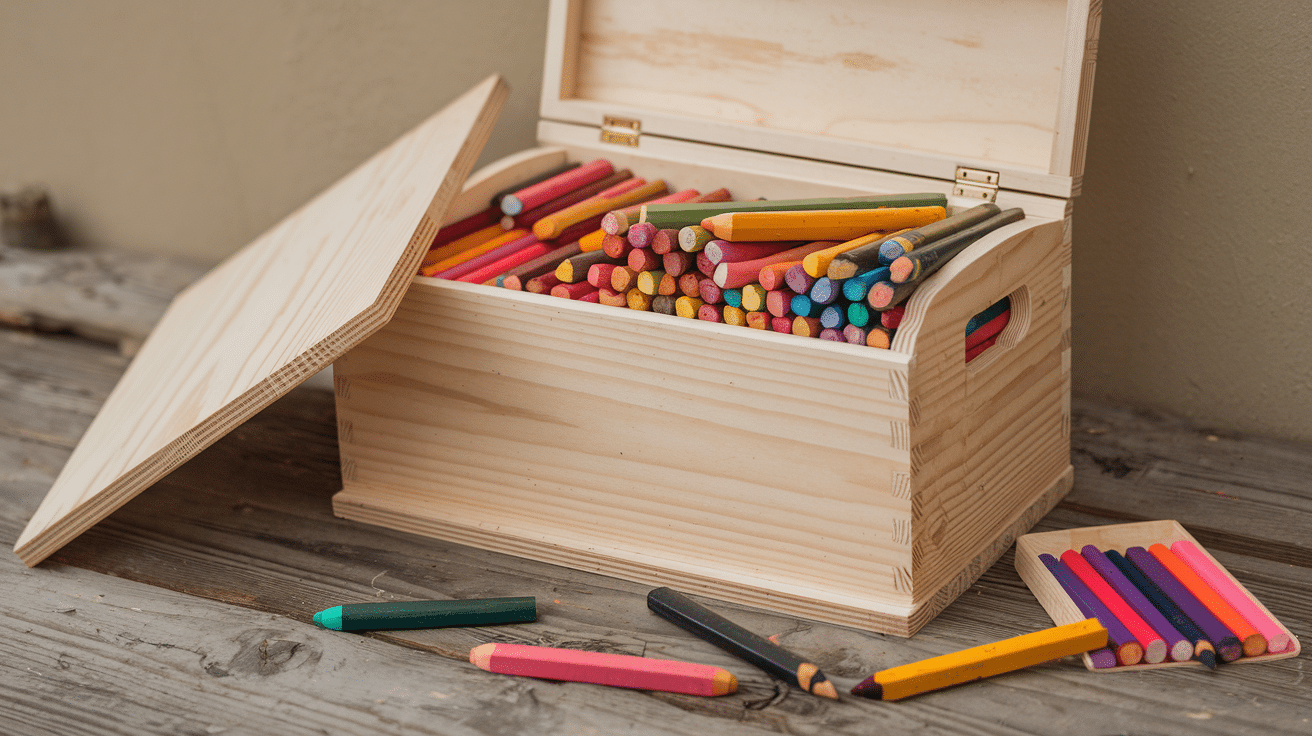
Proper storage of oil pastels helps maintain their quality and extend their usability. Artists must consider several factors to keep these art supplies in good condition.
The right storage methods prevent common issues, such as hardening, crumbling, or color contamination, that can affect artwork quality.
Solution 1: Control Temperature and Humidity
Cool and stable: Store oil pastels in a cool room with temperatures between 65-75°F (18-24°C). Extreme heat can cause them to melt and lose their shape, while cold temperatures may make them too brittle to use effectively.
Moderate humidity: Keep oil pastels in an environment with 40-50% humidity. Too much moisture can cause mold growth on the wrappers, while very dry conditions might cause them to crack or become less workable.
Solution 2: Organize Your Collection
Color arrangement: Sort oil pastels by color family in dedicated containers or trays. This organization system makes it easier to find specific colors quickly and reduces the chance of dropping or damaging pastels while searching.
Vertical storage: Store oil pastels upright in their original boxes or in specialized holders. This position prevents pressure on the tips and reduces the risk of breakage compared to storing them in piles.
Solution 3: Prevent Contamination
Separate storage: Keep oil pastels away from dry pastels, charcoals, and dusty materials. Using dedicated containers or drawers prevents cross-contamination that can affect the purity of colors.
Clean handling: Wipe oil pastels with a soft cloth after use to remove any mixed colors from the surface. This simple habit prevents color transfer when the pastels are stored together and keeps the colors true.
Common Myths About Oil Pastels Debunked
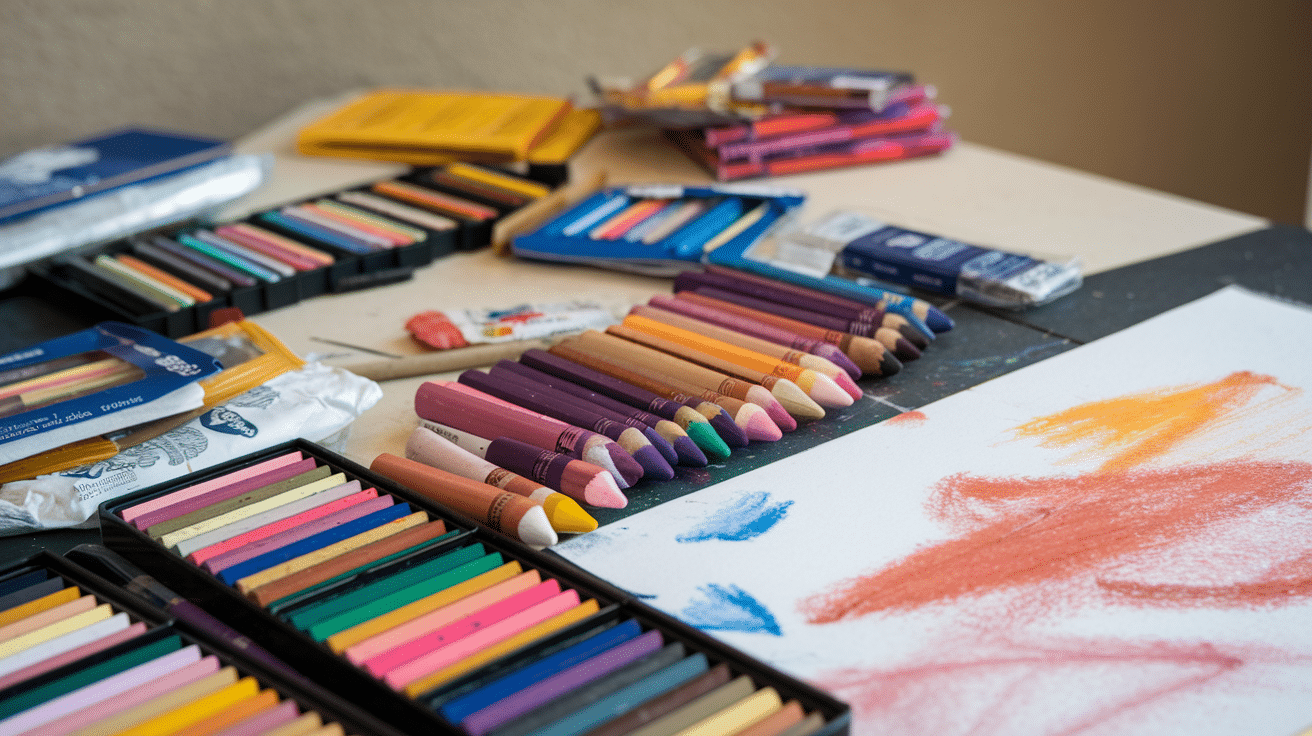
Many artists hold back from trying oil pastels due to false ideas about this medium. These wrong beliefs stop new users from enjoying the full range of what oil pastels can offer.
Let’s clear up some of these basic myths with facts to help you make better choices about using oil pastels in your art.
| Myth | Fact |
|---|---|
| Oil pastels are only for kids and beginners. | Artists use oil pastels at all skill levels, including professionals who create museum-quality artwork. |
| You can’t blend oil pastels well. | Oil pastels can be blended using fingers, tools, or solvents to create smooth color transitions. |
| Oil pastels don’t last long. | When used on good paper and properly stored, oil pastel artwork can last for many years without fading. |
| You need special tools to use oil pastels. | While tools can help, you can create great art with just pastels and your fingers. |
| Oil pastels can’t create fine details. | With practice and proper techniques, artists can create very fine details using the edges or points of oil pastels. |
Summing Up
Oil pastels don’t fully dry like other mediums. They remain slightly workable over time, which makes them both unique and challenging to preserve. This explains why artists need specific techniques to protect their work.
The methods we’ve covered for handling the question “Do Oil Pastels Dry?” will help keep your artwork looking fresh for years. These simple steps make a big difference in how well your pieces maintain their color and texture.
Understanding that oil pastels have different properties than traditional paints gives you the knowledge to work with them effectively. Their semi-soft nature is actually part of their charm.
With proper care, your oil pastel creations can last just as long as artworks made with other materials while keeping their distinctive look and vibrant colors.

